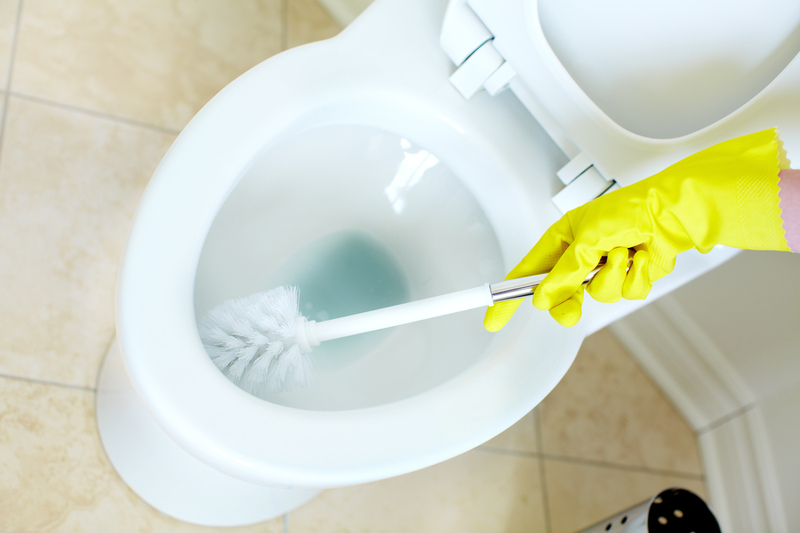Best Practices for Eradicating Damp Smells
Posted on 08/06/2025
Best Practices for Eradicating Damp Smells: A Complete Guide
Unpleasant damp smells can be a persistent nuisance in homes, offices, basements, or any space vulnerable to excess moisture. Understanding how to eliminate musty odors for good not only leads to a fresher environment but also helps protect against potential health risks and structural damage. This comprehensive article explores the best practices for eradicating damp smells, offering step-by-step solutions and critical preventative measures.

Understanding the Causes of Damp Smells
Before you can get rid of damp odors, it's crucial to address their root causes. Damp smells are often associated with the presence of mold, mildew, or lingering moisture. Common culprits include:
- Poor ventilation and air circulation
- Leaking pipes or plumbing issues
- Rising damp from foundations
- Condensation build-up on walls and windows
- Flooding or water ingress
Identifying the source of excess moisture is the first priority in your battle against stubborn, musty odors. Only by tackling the source can you ensure lasting freshness and effectively eradicate those unpleasant damp smells.
Step 1: Locate and Address Moisture Issues
Inspect Problem Areas
Begin your damp smell elimination process by thoroughly inspecting common trouble spots:
- Basements and cellars
- Bathroom corners and under sinks
- Behind or under kitchen appliances
- Closets, wardrobes, and storage rooms
- Attics and crawl spaces
Look for visible signs such as water stains, mold spots, peeling paint, or warped wood. A professional moisture meter can help detect invisible problem areas.
Fix Leaks and Damp Sources
Once located, it's essential to repair leaks or faults causing dampness:
- Tighten or replace faulty plumbing and pipework
- Seal cracks in walls and foundations
- Install or fix gutters and downspouts
- Improve exterior grading to direct water away
- Replace damaged roofing or flashing
_Pro tip: Use waterproof sealants in bathrooms and kitchens where water exposure is frequent._
Step 2: Improve Ventilation and Airflow
Poor ventilation is a leading cause of stagnant air and musty smells. Boosting airflow aids in drying out affected spaces and prevents future damp buildup.
Ventilation Techniques
- Open windows and doors regularly, especially after showering or cooking
- Install extractor fans in bathrooms and kitchens
- Use trickle vents or air bricks for continuous airflow
- Add ceiling or portable fans to circulate air in larger rooms
- Don't block radiators with furniture or heavy drapes
Dehumidifiers: A Game Changer
Investing in a quality dehumidifier is one of the best ways to remove damp smells by lowering ambient humidity levels. Place the device in spots prone to moisture to draw excess water from the air, thus creating an inhospitable environment for mold and mildew.
Regularly empty and clean your dehumidifier for peak performance.
Step 3: Clean and Disinfect Thoroughly
Cleaning Surfaces
Once damp sources are resolved and airflow is improved, it's time to clean all affected surfaces. Mold spores contribute heavily to persistent musty odors and require targeted cleaning:
- Hard Surfaces: Wash with soap and hot water, then disinfect using a solution of one cup bleach per gallon of water (keep the area ventilated)
- Soft Furnishings: If washable, launder with hot water and a splash of vinegar. For delicate items, sprinkle baking soda, let sit, then vacuum thoroughly
- Carpets and Rugs: Steam clean, treat spots with enzyme-based cleaners, and ensure thorough drying
- Walls and Ceilings: Wipe down with an anti-mold solution or diluted bleach
Don't forget: Discard items that are heavily infested or beyond salvage.
Odor Removal Solutions
- Vinegar: Natural, effective at neutralizing odors--place bowls of white vinegar around the room
- Baking soda: Absorbs odors--sprinkle on carpets or soft furnishings, leave overnight, then vacuum
- Activated charcoal: Place in small sachets around damp-prone areas
- Coffee grounds: Pleasantly masks and absorbs residual smells
All cleaning should be done while wearing gloves and a mask to prevent direct exposure to mold spores.
Step 4: Dry Everything Out Completely
The key to eradicating musty odors and removing damp smells is ensuring all items and spaces are completely dry after cleaning.
- Leave windows open and fans running for several hours after cleaning
- Sun-dry washable items as sunlight is a natural disinfectant (UV rays kill lingering spores)
- For wardrobes and cabinets, use moisture-absorbing packs or silica gel
- Lift carpets and floor coverings to air dry sub-floors if needed
_Getting rid of moisture now ensures musty odors don't return._
Step 5: Preventing Future Damp Odors
Routine Maintenance
Consistent upkeep reduces the risk of damp returning. Here are the top preventative strategies:
- Inspect regularly: Check pipes, gutters, and appliances for leaks each season
- Control humidity: Keep indoor relative humidity between 40-60% using dehumidifiers or HVAC systems
- Encourage airflow: Avoid cluttering areas near exterior walls; leave wardrobe doors ajar in humid weather
- Waterproof basements and crawlspaces: Apply sealants and ensure drainage slopes away from the structure
- Store items off the floor: In vulnerable areas, keep stored goods on raised platforms or shelving
Using Natural Odor Absorbers
- Bags of silica gel: Absorb moisture, ideal for closets or storage boxes
- Sachets of lavender or cedar chips: Add a pleasant, natural scent while fighting mildew
- Open jars of baking soda: In unobtrusive corners, replace monthly
Avoiding Common Mistakes in Damp Removal
While aiming to remove musty odors, it is easy to overlook pitfalls that hinder progress:
- Masking smells with sprays or air fresheners instead of treating moisture
- Not allowing sufficient drying time after cleaning
- Stuffing storage in under-ventilated spaces
- Ignoring potential mold behind walls or under floors
_Always address underlying moisture before using deodorizers--otherwise, the problem will return!_
When to Call a Professional
Some damp and mold problems require expert intervention, especially if:
- The musty smell persists despite all efforts
- There's visible mold spread over larger than 1m?
- Water damage extends to structural elements
- You or your family experience allergic symptoms, breathing problems, or frequent headaches
Professionals can carry out advanced drying, decontamination, and waterproofing to fully eliminate deep-rooted damp odors.

Frequently Asked Questions on Eradicating Damp Smells
What is the fastest way to remove musty odors from a room?
First, ventilate the space by opening all windows and placing a fan to drive out stale air. Next, address moisture with a dehumidifier and then clean all affected surfaces. Place bowls of vinegar or baking soda to absorb remaining odors. Ensuring everything is thoroughly dry is crucial for fast relief.
Can air fresheners eliminate damp smells?
No--air fresheners only mask odors temporarily. To get rid of damp odors permanently, address the source of moisture and clean/disinfect all affected areas.
Why do musty smells return after cleaning?
Lingering damp or undetected mold growth can cause smells to come back. Repeat cleaning may be necessary, but the root moisture problem must be resolved first.
Are damp smells harmful to health?
Yes--prolonged exposure to mold and damp air can lead to allergies, asthma, and other respiratory issues. Children, the elderly, and those with compromised immune systems are especially vulnerable.
Conclusion: Achieving a Fresher, Healthier Environment
The key to eradicating damp smells lies in a holistic approach--combining source detection, moisture management, thorough cleaning, and preventative measures. By rigorously following these best practices for eliminating musty odors, you protect both your property and your health, paving the way for a cleaner, more welcoming living or working space.
_Underline your commitment to freshness by starting your damp smell eradication mission today!_
- Inspect for leaks and moisture regularly
- Promote airflow and manage humidity
- Clean and dry all surfaces and materials
- Use natural odor absorbers for ongoing freshness
With dedication and the right techniques, you can confidently eliminate damp and musty smells for good--enjoying every breath in your rejuvenated space.




